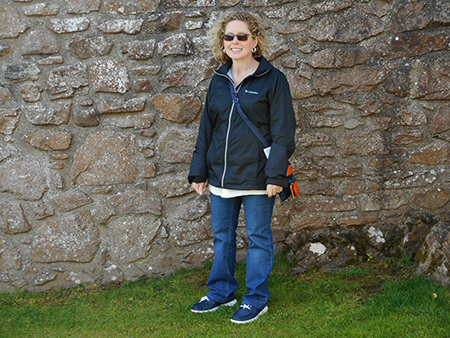Media contact: Anna Jones
 Symptoms of heart valve disease often go undetected or dismissed as a normal part of aging. Patient Karen Hay was unaware and says the procedure at UAB to repair the valve saved her life. An estimated 11 million Americans have heart valve disease (HVD), a condition that involves damage to one or more of the heart’s valves. Although symptoms of this disease can often go undetected or dismissed as a normal part of aging, it can be deadly, killing an estimated 25,000 people in the United States each year.
Symptoms of heart valve disease often go undetected or dismissed as a normal part of aging. Patient Karen Hay was unaware and says the procedure at UAB to repair the valve saved her life. An estimated 11 million Americans have heart valve disease (HVD), a condition that involves damage to one or more of the heart’s valves. Although symptoms of this disease can often go undetected or dismissed as a normal part of aging, it can be deadly, killing an estimated 25,000 people in the United States each year.
HVD occurs when a damaged heart valve disrupts blood flow to the heart by not opening or closing properly. There are two types of disruptions: stenosis and regurgitation. Stenosis occurs when the heart valve does not open correctly, limiting blood flow to the heart. Regurgitation occurs when a loose valve does not close completely, allowing blood to leak back into the heart. This disruption in blood flow results in reduced oxygen levels, which can cause a number of problems. Symptoms of HVD include shortness of breath, dizziness and fatigue, pain or tightening in the chest, fainting, irregular heartbeat, and swelling in the ankles and feet.
Karen Hay understands the seriousness of undetected HVD symptoms. Hay, 50, of Jacksonville, Alabama, was treated for the disease at the University of Alabama at Birmingham Cardiovascular Institute after encountering a major red flag while recovering from a knee surgery at a local hospital.
Hay was about to be discharged from the hospital when she felt her temperature rise and was struggling to breathe. She was experiencing cardiac arrest and began retaining fluid in her lungs. Hay was quickly transported to the UAB Emergency Department, where she was treated by Mustafa Ahmed, M.D., director of Interventional Cardiology.
“When she arrived here, Karen was extremely critical,” Ahmed said. “She was blue and had almost no pulse. We actually wondered if we might not be able to resuscitate her. She was taken straight to the catheter lab and placed on life support. We had only seconds to get her on a heart-lung machine.”
Hay was placed on an extracorporeal membrane oxygenation, or ECMO, machine, which takes on the function of the heart and lungs by routing the patient’s blood into the machine, where carbon dioxide is removed and oxygen is added. The blood is then pumped back into the body.
“Most people have three openings in the heart valve; Karen had only two,” Ahmed said. “We performed a valve replacement two days after she was placed on life support. Her response was amazing. She went home and now lives a completely normal life.”
Hay was unaware of the seriousness of HVD until it reached a critical condition. She says the procedure to repair the valve saved her life.
“Now I can work in my yard and do other activities without shortness of breath,” Hay said. “Dr. Ahmed and the entire team took such good care of me. Thanks to UAB Medicine, I have a new lease on life.”
